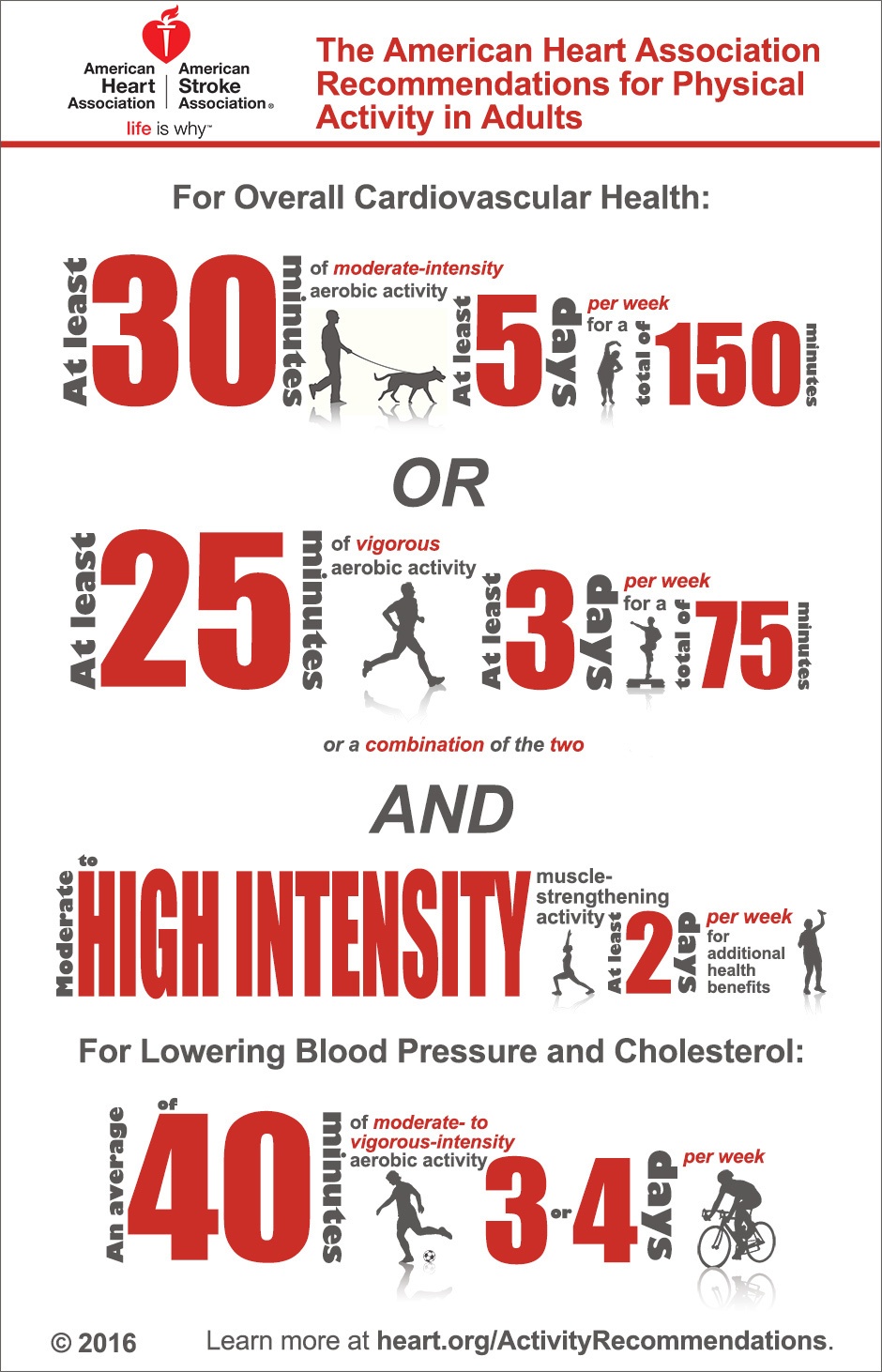
High-Intensity Exercise Is More Time Efficient!
The United States Science-Based Guidelines for Physical Activity Recommendations for Adults call for 50% less time on aerobic physical activity for vigorous-intensity vs moderate intensity.
A general rule of thumb is that 2 Minutes of moderate-intensity activity is the same as 1 minute of vigorous-intensity activity. See below for a more detailed list of their recommendations for substantial health benefits.
A general rule of thumb is that 2 Minutes of moderate-intensity activity is the same as 1 minute of vigorous-intensity activity
Do one of the following in episodes of at least 10 minutes and, if possible, spread it out through the week (doing more will lead to even greater health benefits):
- 150 minutes (2 hours and 30 minutes) each week of moderate-intensity aerobic physical activity
- 75 minutes (1 hour and 15 minutes) each week of vigorous-intensity aerobic physical activity
- An equivalent combination of moderate and vigorous-intensity aerobic physical activity
Do muscle-strengthening activities that are moderate or high in intensity and involve all major muscle groups on 2 or more days a week.





